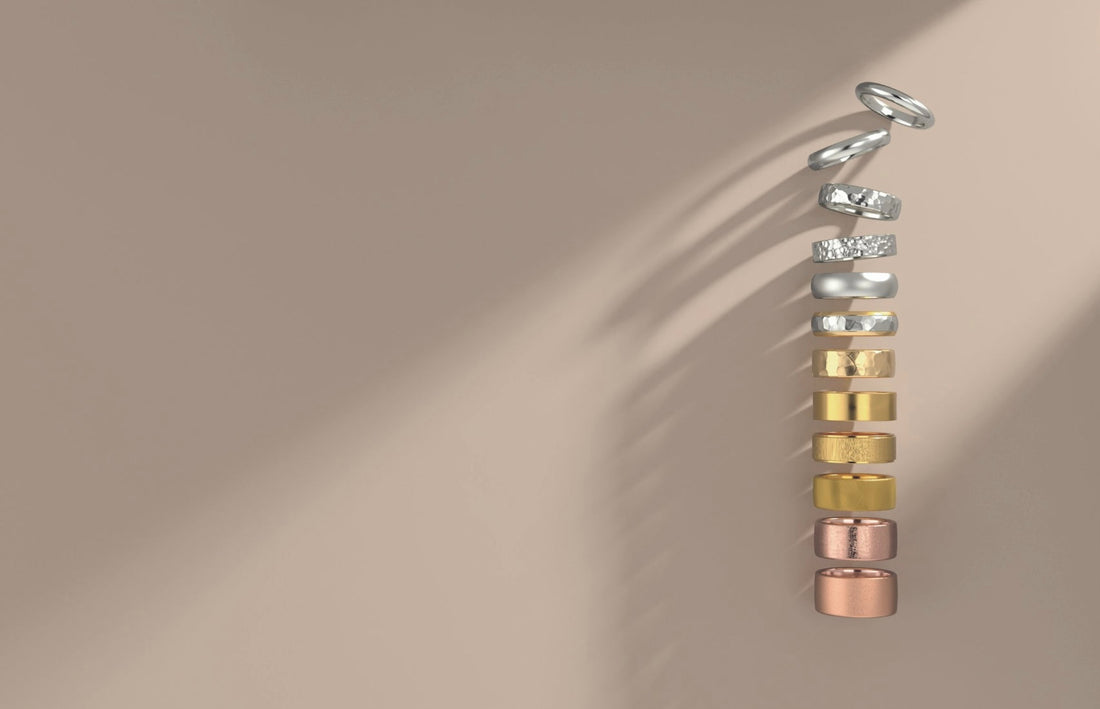How to Choose the Right Metal for Your Engagement Ring

Share
How to Choose the Right Metal for Your Engagement Ring
Choosing the right metal for your engagement ring is just as important as selecting the perfect diamond or gemstone. The metal not only affects the ring’s appearance but also its durability, maintenance, and overall feel. Whether you’re looking for timeless elegance, modern sophistication, or vintage charm, here’s a guide to help you pick the best metal for your engagement ring.
1. Platinum: The Ultimate Luxury Choice
Platinum is one of the most sought-after metals for engagement rings due to its durability and hypoallergenic properties.
Pros:
• Naturally white metal that won’t tarnish or fade.
• Extremely durable and resistant to scratches.
• Hypoallergenic—great for sensitive skin.
Cons:
• More expensive than other metals.
• Can develop a patina over time, which some people love for its antique look.
Fun Fact: Platinum was used in ancient Egyptian jewelry over 3,000 years ago but wasn’t widely used in rings until the 20th century!
2. White Gold: Classic and Versatile
White gold offers the same elegant look as platinum but at a lower cost.
Pros:
• More affordable than platinum while still offering a luxurious appearance.
• Can be easily resized or repaired.
• Pairs beautifully with diamonds and colored gemstones.
Cons:
• Requires rhodium plating to maintain its white sheen.
• Prone to scratches over time.
Fun Fact: White gold is actually yellow gold mixed with metals like nickel or palladium to create its silvery tone.
3. Yellow Gold: Timeless and Traditional
For those who love a warm, rich tone, yellow gold is a fantastic option.
Pros:
• Classic choice with a vintage feel.
• Easy to maintain and polish.
• Complements warm skin tones and vintage-inspired designs.
Cons:
• Softer metal that can scratch more easily.
• Not as durable as platinum or white gold.
Fun Fact: The oldest known gold jewelry dates back over 6,000 years to the ancient Mesopotamians!
4. Rose Gold: Romantic and Unique
Rose gold has gained popularity in recent years for its warm, pinkish hue and romantic appeal.
Pros:
• Beautiful, feminine, and unique.
• More durable than yellow and white gold due to its copper content.
• Complements all skin tones.
Cons:
• Not hypoallergenic due to its copper alloy.
• Harder to find in some styles compared to white or yellow gold.
Fun Fact: Rose gold was first popularized in Russia during the 19th century, which is why it was once called "Russian gold."
5. Mixed Metal Rings: Best of Both Worlds
Can’t decide on one metal? Mixed metal rings combine two or more metals for a unique and modern look.
Pros:
• Offers contrast and visual interest.
• Lets you incorporate both cool and warm tones.
• Ideal for those who wear both white and yellow gold jewelry.
Cons:
• May be harder to match with future wedding bands.
• Requires a jeweler skilled in mixed metal designs.
Fun Fact: Some engagement rings feature a hidden mixed metal detail, such as a rose gold underband, for a personal touch.
Final Thoughts: How to Choose the Right Metal for You
When selecting the metal for your engagement ring, consider:
• Lifestyle: If you have an active lifestyle, opt for a durable metal like platinum.
• Skin Sensitivity: Choose hypoallergenic metals like platinum or high-karat gold if you have allergies.
• Budget: White gold offers a platinum-like look at a more affordable price.
• Personal Style: Yellow and rose gold bring warmth, while white gold and platinum offer a sleek, modern appeal.
With these tips in mind, you’ll find the perfect metal to symbolize your forever love!
Explore our collection at Simona B. Jewelry and find the perfect engagement ring metal for you!